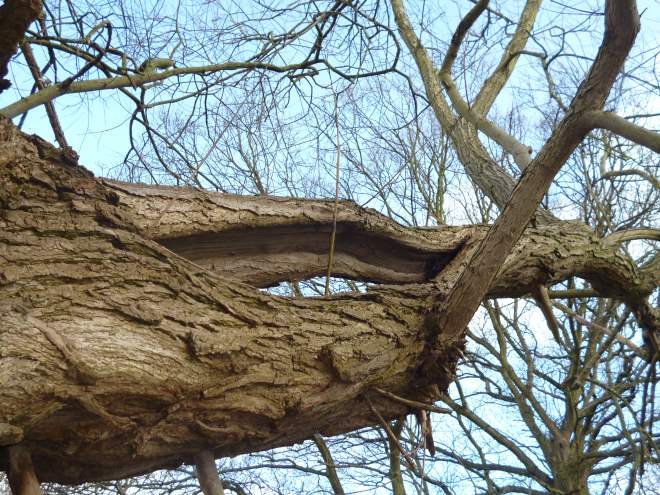Here’s an interesting one. We have a willow (suspected Salix alba) that has a bit of a wayward limb, which has developed into a hazard beam after being bent straight (during a loading event that was probably caused by the wind, though maybe even by the limb’s own weight?). Curiously, the hazard beam is not necessarily recent as there is distinct ribbing around the wound area. I’m not sure whether one could say the region is entirely stable in terms of structural integrity, though it doesn’t appear to have split any further along the limb since the inception of the issue.
There are three courses of action here: (1) do nothing, (2) take some weight off the limb, or (3) remove the entire limb. Options 2 and 3 are perhaps more preferable, and from there it simply becomes a case of determining whether removing the entire limb would be undesirable from a long-term retention perspective (given it’d create a large wound on the trunk that a willow would probably struggle to compartmentalise, and removal would also take out a fair portion of the overall crown structure).





interesting. would it not be better to remove the “hazard” as it might break off by itself at the main trunk and that would cause more harm? just a passing random comment.
LikeLiked by 1 person
A good point you raise there! There’s of course the risk of the limb failing at the junction and leaving a tear-out wound where the branch tail is ripped from the trunk, though there’s also the risk of it failing along the limb itself. I suppose it then comes down to whether that managing the risk by taking part of it away is sufficient, and whether the usage of the area in which the limb resides is significant enough to warrant entire removal of the hazard in place of trying to manage its presence.
LikeLike
These hazard beams are often good habitat for roosting bats. The ideal outcome would be to reduce the branch and therefore the risk, while retaining the hazard beam in its entirety with a much reduced risk?
LikeLike